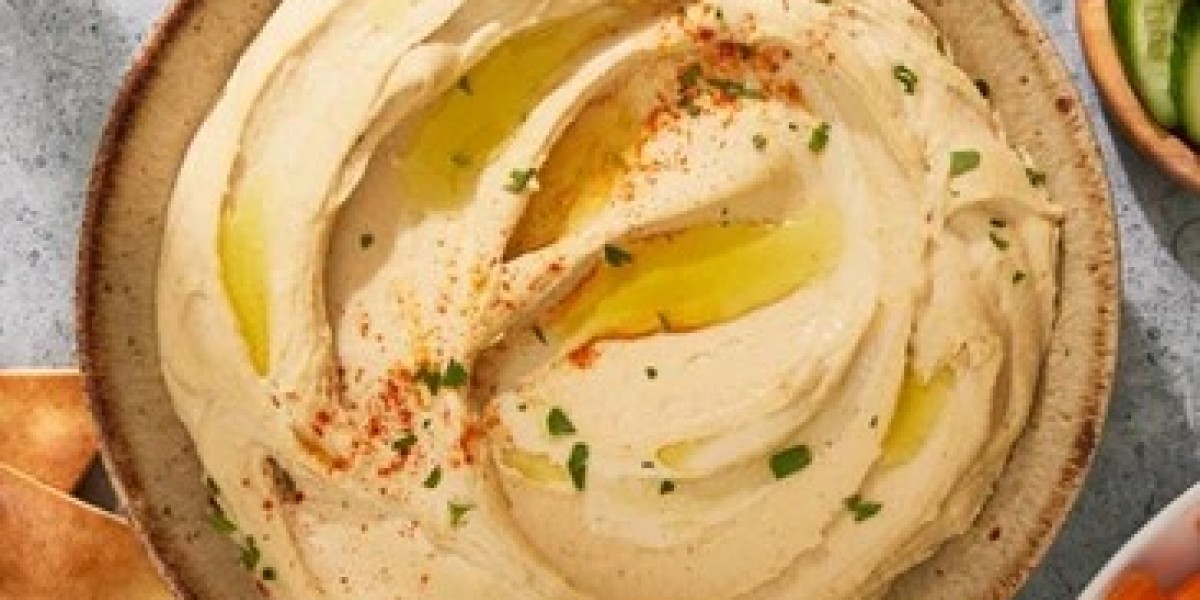Lebanese cuisine is a delightful journey through flavors, colors, and textures that have been perfected over centuries. At the heart of this culinary adventure lies a diverse array of side dishes that complement the main courses and tantalize the taste buds. One cannot delve into Lebanese food without encountering the iconic Lebanese hummus, a creamy and flavorful dish that has gained international acclaim. In this article, we'll explore the world of Lebanese side dishes, the broader landscape of Lebanese cuisine, and the beloved Lebanese hummus that has become a global culinary sensation.
Lebanese Side Dishes: A Culinary Mosaic
Lebanese side dishes are a testament to the rich cultural and historical influences that have shaped the country's gastronomy. From the vibrant markets of Beirut to the humble kitchens in Lebanese homes, side dishes play a crucial role in every meal. Tabbouleh, a refreshing parsley salad, is a quintessential Lebanese side dish that bursts with freshness and zesty flavors. Its combination of finely chopped parsley, tomatoes, onions, and bulgur is dressed with olive oil and lemon juice, creating a symphony of tastes that awaken the palate.
Another popular Lebanese side dish is Baba Ganoush, a smoky eggplant dip that exemplifies the art of simplicity and bold flavors. Charred eggplants are blended with tahini, garlic, and lemon juice to create a velvety, savory dip that pairs exceptionally well with warm pita bread. Mutabal, a cousin to Baba Ganoush, incorporates yogurt into the mix, adding a creamy dimension to the dish.
Moujadara, a comforting dish made with lentils, rice, and caramelized onions, showcases the Lebanese penchant for turning humble ingredients into culinary masterpieces. The marriage of earthy lentils and fragrant rice, topped with golden brown onions, makes Moujadara a satisfying side dish that often takes center stage on Lebanese dining tables.
Lebanese Cuisine: A Gastronomic Odyssey
Lebanese Food is a celebration of fresh, seasonal ingredients and a harmonious blend of spices. Olive oil, garlic, and lemon are the cornerstones of many Lebanese dishes, imparting a distinctive Mediterranean flavor profile. The Lebanese approach to cooking involves layering flavors and letting the natural essence of each ingredient shine through.
Mezze, a selection of small appetizers and side dishes, is a customary way of beginning a Lebanese meal. It is a feast for the senses, offering an array of flavors, textures, and colors. Mezze often includes traditional dishes such as hummus, falafel, grape leaves stuffed with rice and herbs (known as Warak Enab), and Kibbeh, a savory mix of minced meat and bulgur.
The Lebanese Hummus: A Global Culinary Ambassador
No exploration of Lebanese cuisine is complete without paying homage to hummus. Hummus has transcended its origins and become a beloved staple in kitchens around the world. Made from chickpeas, tahini, garlic, lemon juice, and olive oil, Lebanese hummus is a creamy and indulgent dip that can be served with pita bread, vegetables, or as a spread on sandwiches.
Lebanese hummus is distinguished by its velvety texture and the perfect balance of nutty tahini and zesty lemon. The key lies in using high-quality ingredients and mastering the art of blending to achieve that smooth, ethereal consistency. Whether enjoyed as a snack, appetizer, or accompaniment to a larger meal, Lebanese hummus is a versatile dish that has become a cultural ambassador, bridging gaps and bringing people together through the shared love of good food.
FAQs About Lebanese Side Dishes and Hummus
Q1: What makes Lebanese side dishes unique?
A1: Lebanese side dishes are characterized by the use of fresh, seasonal ingredients, vibrant flavors, and a harmonious blend of Mediterranean spices. The emphasis on olive oil, garlic, and lemon imparts a distinctive taste that sets Lebanese cuisine apart.
Q2: Is Lebanese hummus different from other types of hummus?
A2: Yes, Lebanese hummus is known for its velvety texture and the perfect balance of nutty tahini and zesty lemon. The use of high-quality ingredients and the meticulous blending process contribute to its unique and authentic flavor.
Q3: Can you recommend a Lebanese side dish for a summer gathering?
A3: Tabbouleh is an excellent choice for a summer gathering. Its refreshing combination of parsley, tomatoes, onions, and bulgur, dressed with olive oil and lemon juice, makes it a light and vibrant option that's perfect for warm weather.
Q4: How can I make Lebanese hummus at home?
A4: To make Lebanese hummus at home, blend cooked chickpeas, tahini, garlic, lemon juice, and olive oil until smooth. Adjust the seasoning to taste and garnish with a drizzle of olive oil. Serve with pita bread or fresh vegetables.
Conclusion
Lebanese side dishes offer a kaleidoscope of flavors, showcasing the culinary expertise that has been passed down through generations. From the refreshing Tabbouleh to the smoky Baba Ganoush, each dish tells a story of tradition, culture, and a love for good food. Amidst this gastronomic journey, Lebanese hummus stands as a global ambassador, inviting people worldwide to savor the richness of Lebanese cuisine. So, the next time you embark on a culinary adventure, consider exploring the diverse world of Lebanese side dishes and indulging in the creamy perfection of Lebanese hummus.



